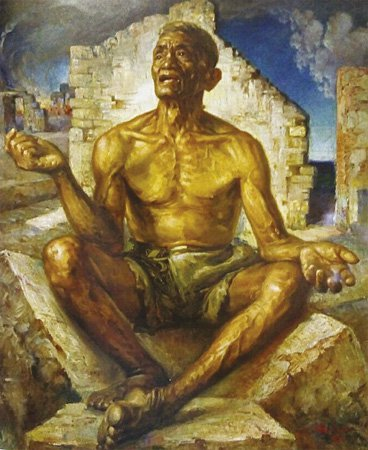Lesson 3: Artists who use Indigenous Material
1/55
There's no tags or description
Looks like no tags are added yet.
Name | Mastery | Learn | Test | Matching | Spaced |
|---|
No study sessions yet.
56 Terms
Rodel Tapaya
His work is characterized by a mix of traditional and modern elements, often depicting surreal, dreamlike scenes populated by mythical creatures, historical figures, and everyday people. His paintings frequently explore PH folklore and mythology, Social and political commentary, Symbolism and storytelling.
"Cane of Kabunian, Numbered But Cannot Be Counted" (2011)
"Baston ni Kabunian" Series
Rodel Tapaya’s Works
“Cane of Kabunian, Numered But Cannot Be Counted” by Rodel Tapay (2011)
This piece won the prestigious APB Foundation Signature Art Prize in Singapore.
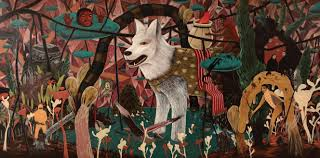
"Baston ni Kabunian" Series
A collection of paintings referencing the Filipino creation myth and folklore.
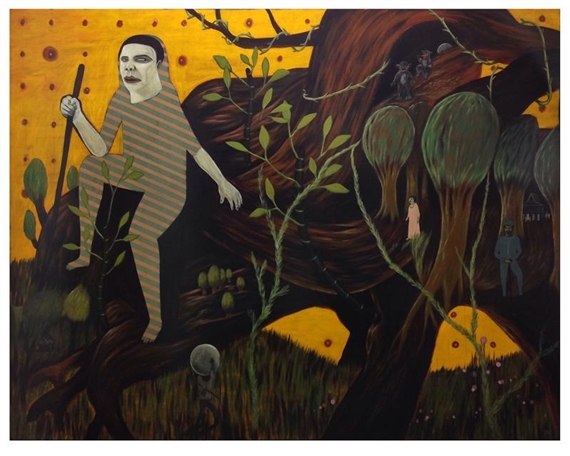
Ronald Jaramillo Hilario
His sculptures are characterized by wood being the primary medium, Influences from indigenous and folk traditions, Minimalist and spiritual aesthetics, Contemporary reinterpretation of tradition.
"The Screaming Angel, " "The Night is Darkest When It Bears the Stars That Are Brightest"
Ronald Jaramillo Hilario’s Works
“The Screaming Angel” by Ronald Jaramillo Hilario
This sculpture exemplifies Hilario's ability to blend traditional religious imagery with contemporary expression, capturing a dynamic and emotive form that resonates with both historical and modern sensibilities.
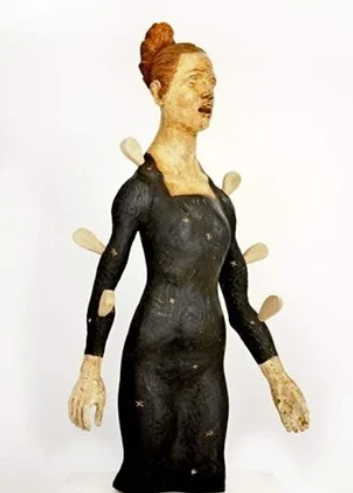
"The Night is Darkest When It Bears the Stars That Are Brightest" by Ronald Jaramillo Hilario
This piece reflects Hilario's exploration of philosophical themes, rendered through his masterful woodcarving skills.
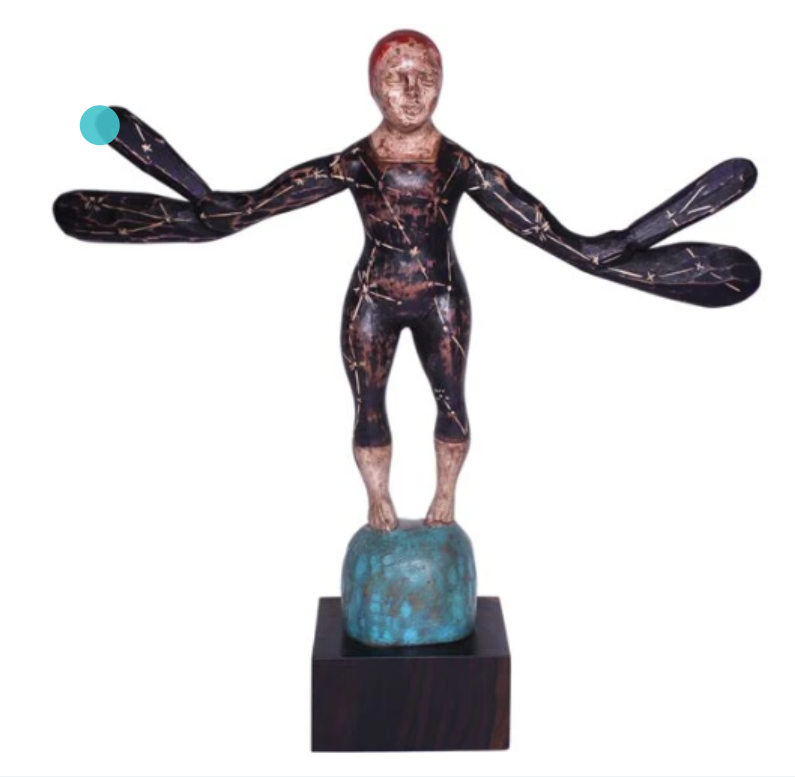
Bert Monterona
Originally from Iligan City, but is now based in Vancouver, Canada. He is a mixed media artist who is known for his innovative use of indigenous materials for his art, specifically for his tapestry paintings and bamboo stick paintings. His tapestry paintings depict Filipino myths and rituals decorated with native motifs such as cloud scallops, triangular mountains, flames, and leaf-like patterns created by the outgrowth of flora and the terrain.
The Heart of Unity in Diversity (2000), Moro Life and Resistance (1998), Unforgotten Heroes (1985), Vision and Hope for Justice and Peace (1998)
Bert Monterona’s Works
The Heart of Unity in Diversity (2000) by Bert Monterona
Mimics traditional woven fabric through tapestry-style technique
Combines indigenous patterns and symbols
Represents cultural unity and harmony
Advocates for mutual respect in a diverse society
Message: Strength is found in embracing diversity
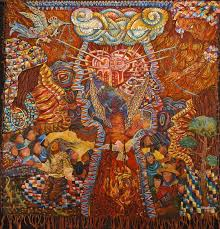
Moro Life and Resistance (1998) by Bert Monterona
Description: This artwork portrays a tender moment between a mother and her child, emphasizing familial love and connection. The intricate details reflect the simplicity and beauty of everyday life in indigenous communities.
Techniques & Materials: Catague uses pen-and-ink techniques to create fine lines and textures, showcasing his mastery in rendering emotions through minimalistic yet detailed compositions.
Purpose: The piece highlights the universal importance of family bonds while subtly referencing the role of women in preserving cultural traditions
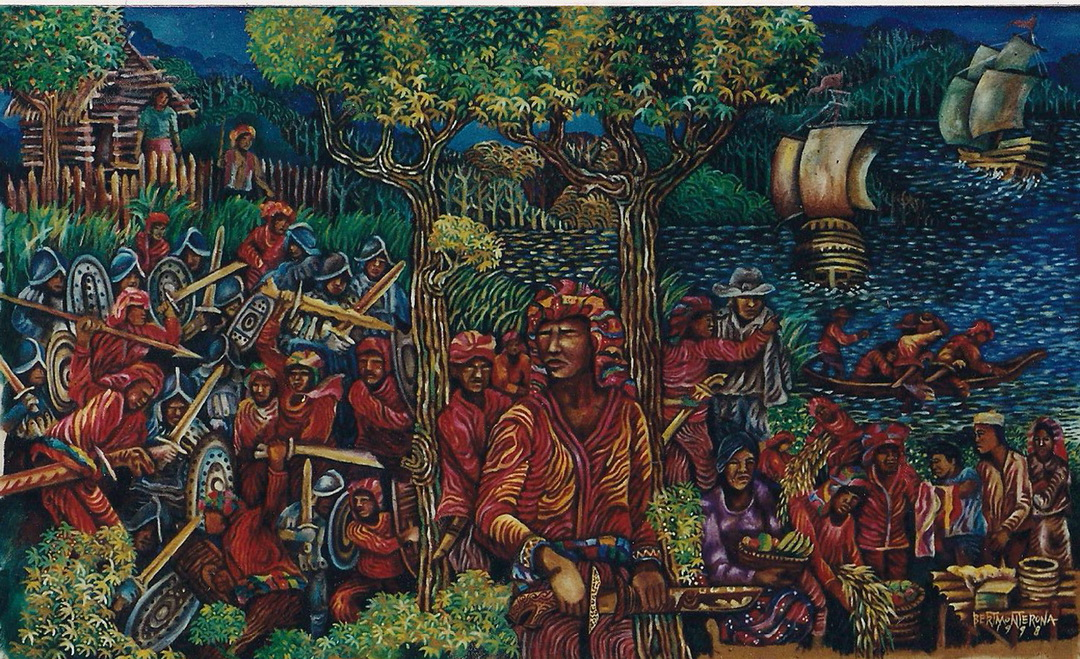
Rameer Amilasan Tawasil
A master of ukkil, a Tausug curvilinear design used in woodcarvings, textiles, brassware, and architecture. His art is deeply rooted in Tausug culture and history, often promoting peace and unity amidst Mindanao’s challenges.
He is renowned for using his art to advocate for peace during times of conflict in Mindanao. His works integrate vibrant colors and intricate patterns inspired by Tausug traditions.
He has conducted environmental art workshops using recycled materials to promote sustainability alongside cultural preservation.
Saalam, Cyclone
Rameer Amilasan Tawasil’s Works
Saalam by Rameer Amilasan Tawasil
Overall Emphasis:
The artwork immediately draws the viewer's attention to the central figures: two individuals holding a pot and another raising their hands.
While the white dove is a captivating element, it serves primarily as a supporting detail and does not overshadow the main figures.
Use of Color and Contrast for Emphasis:
The light color of the dove-shaped smoke/fog contrasts with the more pigmented elements around it, helping to emphasize the central figures.
The vibrant coloring of the individuals ensures they are the first elements noticed by the viewer, further highlighting their importance.
Unity and Harmony:
All elements within the composition (people, dove-shaped fog, aircrafts, houses, trees) work together to create a sense of completeness and harmony.
This unity effectively conveys the artist's intended message and emotions.
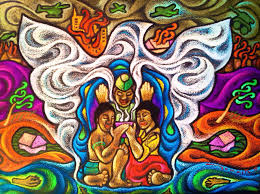
Cyclone by Rameer Amilasan Tawasil
incorporates Tausug ukkil patterns, which are curvilinear designs rooted in Mindanao's indigenous art forms. These motifs symbolize the rich cultural identity of the Moro people.
Expression of Movement: It suggests themes of energy and turbulence, possibly reflecting the chaos and resilience experienced by Tawasil during his childhood amidst the Moro rebellion.
Advocacy for Peace: Tawasil's broader body of work often carries messages advocating peace and understanding. Cyclone may serve as a visual metaphor for the struggles faced by Mindanao while emphasizing hope and unity.
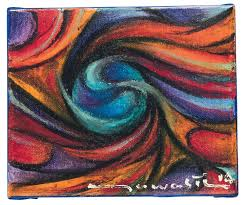
No to War by Bert Monterona
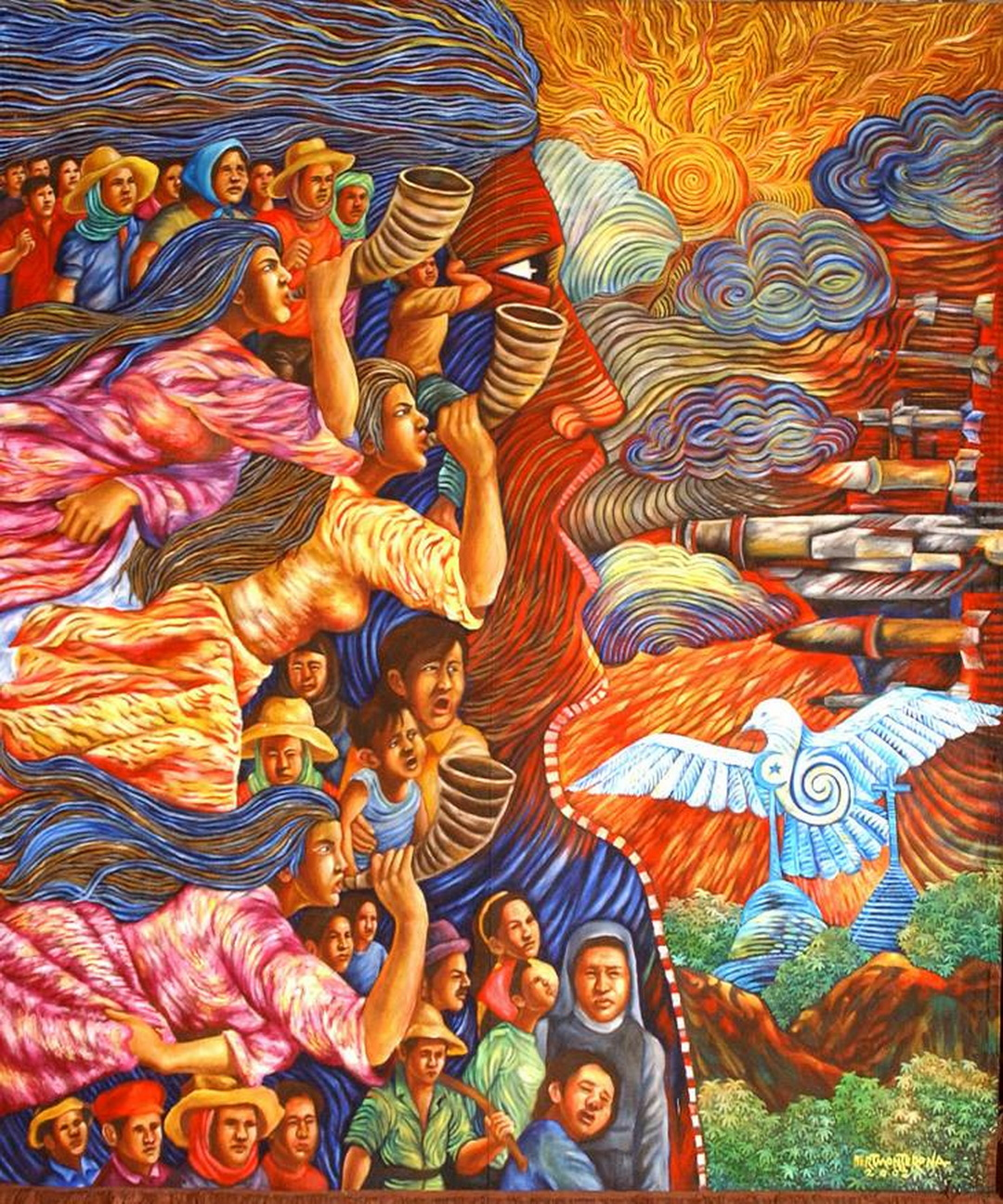
Vision and Hope for Justice and Peace (1998)
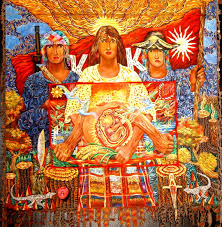
Ricky Ambagan
He looks to the present Filipino daily grind for inspiration. Photography
Keeping the Fire Burning (2018), Paglalakbay (2016)
Ricky Ambagan’s Works
Keeping the Fire Burning (2018)
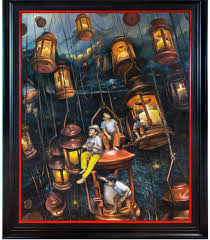
Paglalakbay (2016)
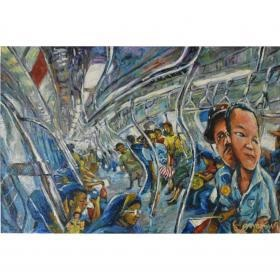
Nunelucio Alvarado
• Born in Negros Occidental, Philippines.
• A founding member of Black Artists in Asia.
• His art often depicts social realism, focusing on laborers, fishermen, and marginalized communities.
• Uses indigenous materials like natural dyes, local textiles, and found objects in his mixed-media artworks.
Sakada (2016) by Nunelucio Alvarado
A powerful piece portraying sugarcane workers in Negros, highlighting their struggles.
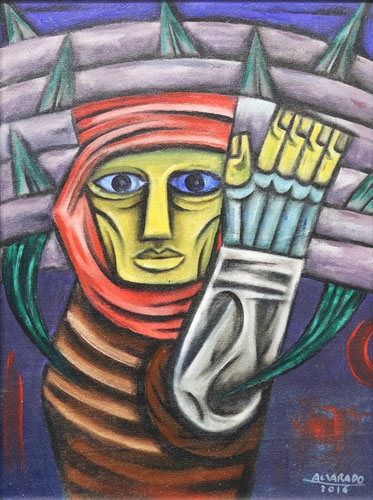
Lain Buot (2008) by Nunelucio Alvarado
It shows us a typical Filipino scene: the man is leaving the home for a cockfight. His wife is not amused.
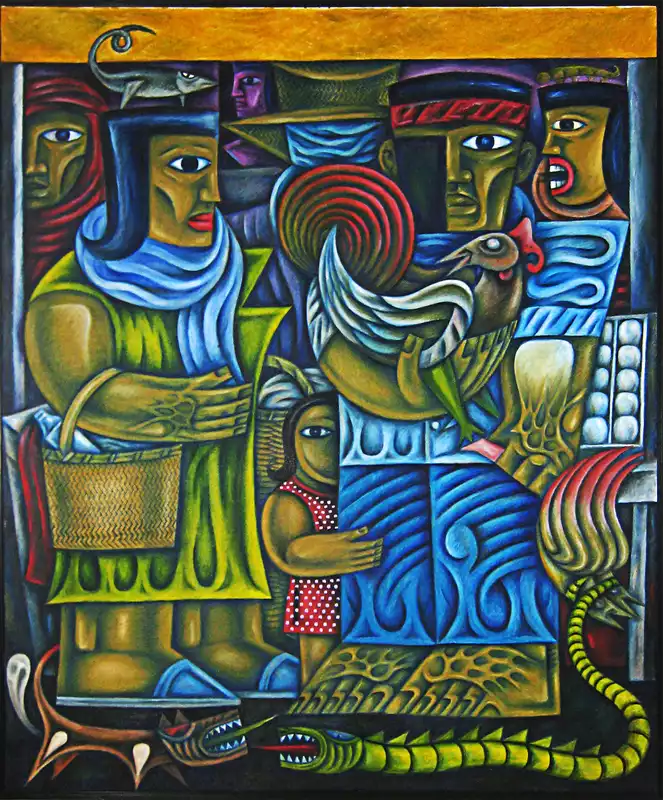
Manuel Panares
• A Cebuano artist and historian known for his historical paintings.
• Uses natural pigments, wood, and other indigenous materials.
• His works focus on Philippine history, heritage, and cultural narratives.
Rajah Humabon by Manuel Panares
A portrait of Rajah Humabon, the first Filipino chieftain to embrace Christianity
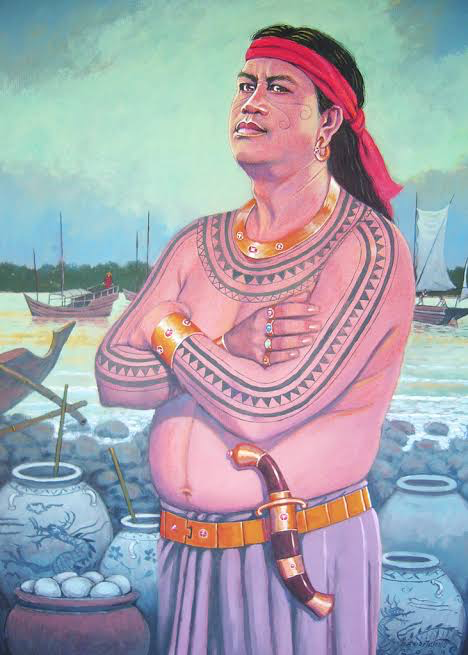
Battle of Mactan by Manuel Panares
A dynamic scene depicting Lapu-Lapu’s victory over Magellan.

Alma "Urduja" Quinto
She is a socially engaged artist who focuses on themes of home, displacement, and healing. Her works often involve marginalized communities, using art as a platform for empowerment and storytelling. Through participatory installations, she transforms art into a tool for dialogue and emotional expression.
Dream Homes Project by Alma Quinto
It invites participants to design their ideal homes, exploring ideas of safety and belonging.
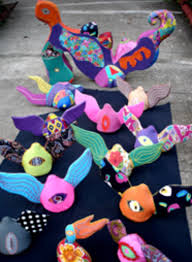
Soft Dreams and Bed Stories by Alma Quinto
Uses textiles to evoke memory and comfort, while her community-based projects amplify personal narratives through collaborative art.
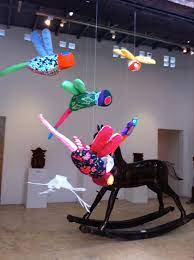
Aze Ong
She is a contemporary artist known for her fiber and textile art. Inspired by indigenous weaving, she transforms crochet into large, interactive installations that explore spirituality, identity, and transformation. Her work challenges traditional views of craft in contemporary art.
Liwanag by Aze Ong
It symbolizes personal and cultural identity. Her nature-inspired installations mimic organic forms like vines and waves, emphasizing the connection between humanity and the environment.
Portals by Aze Ong
It is an interactive outdoor installation made with artist Ged Merino. It features a fabric canopy without openings that invite viewers to look up, symbolizing hope. The piece responds to the environment, highlighting change and impermanence.
John Paul Antido
Impasto Technique. He blends traditional subjects with modern styles showcasing elements like traditional garments, makeshift vehicles, and oriental motifs.
Biyaheng Pansitan, Orasyon ni Maria
John Paul Antido’s Works
Peter James Fantialgo and Moreen Austria
Initially mocked for its seemingly incomplete appearance, the unconventional Impressionist style has now risen to prominence as one of the most celebrated and well-known art movements in history. Emphasizing light and color, quick brushwork, and ordinary daily scenes, Impressionism has captured the attention and admiration of art enthusiasts worldwide.
Lawig
Peter James Fantialgo and Moreen Austria’s Works
Saudi Ahmad
He is a prominent artist from Mindanao, Philippines, known for his dedication to portraying the life and culture of the Bangsamoro people. His works focus on Islamic and Moro customs and traditions, often depicting scenes of daily rituals and grand ceremonial events. He is largely self-taught and has developed a meticulous watercolor technique called "dadag-bawas" or "addition-subtraction," which involves creating intricate lines and tonal variations using a brush
Duwaa Salamat by Saudi Ahmad
depicts a village ritual of thanksgiving. The artwork portrays concentric circles of villagers gathered around offerings, emphasizing the importance of community in rural life. It showcases his detailed style and cultural themes
Abdulmari Imao
was a celebrated Filipino artist and the first Muslim National Artist for Visual Arts in the Philippines. Born in Siasi, Sulu, he was deeply influenced by his Bangsamoro heritage, which he incorporated into his paintings, sculptures, murals, and other art forms. He popularized Filipino Muslim motifs such as sarimanok (a mythical bird), ukkil (traditional carvings), and naga designs
Dexter Sy
He explores the cultural particularities of being Chinese-Filipino, combining two traditional value systems in his work. He uses iconographic depiction in classic pictorial composition, emphasizing cultural patchwork.
DNA (2015) by Dexter Sy
is a large-scale installation that symbolizes his Filipino-Chinese heritage. Using "Good Morning" towels, widely recognized in the Philippines for their everyday use by drivers and laborers, Sy interwove them with native Filipino linens featuring indigenous motifs.
The resulting double helix structure, suspended from the ceiling, represents the fusion of two cultural identities. By combining these materials, Sy explores themes of identity and cultural hybridity.
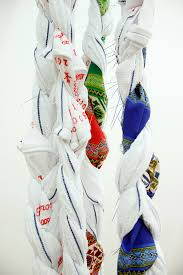
The Self Recognized by the Others (2015)
is a mixed media family portrait that challenges stereotypes. The family wears Kiss-inspired face paint, questioning assumptions about Chinese-Filipinos and metal culture. The background features a blend of multicultural symbols, reflecting Sy's exploration of complex identities.
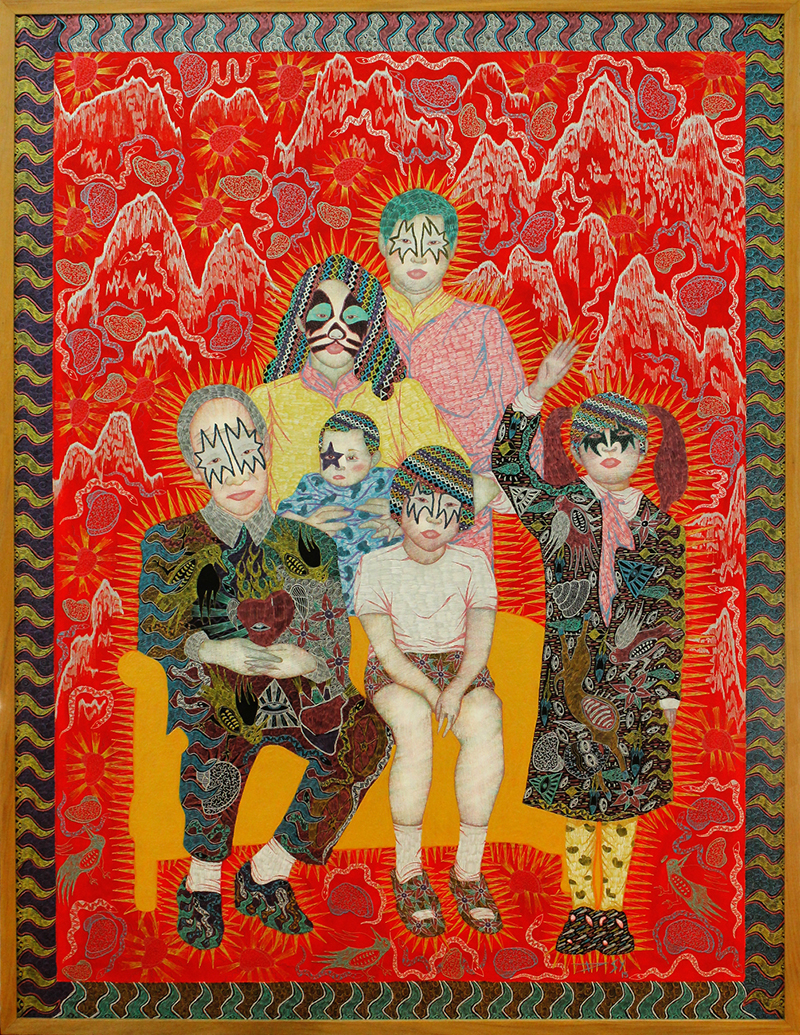
Angela Silva
She uses mixed-media collage, printmaking, and image transfers to explore identity, memory, time, and place. Her "antiquarian sensibility" is achieved by layering diverse materials, including vintage elements, to create nuanced works that reflect personal and collective histories.
Green Depths (2023) by Angela Silva
employs the cyanotype process on cotton paper, combining traditional techniques with modern materials. This antique photographic method produces monochromatic blue images, enhanced by UV varnish. The use of indigenous cotton paper connects the work to local resources, while the cyanotype process reflects Silva's exploration of themes like resilience and transformation.
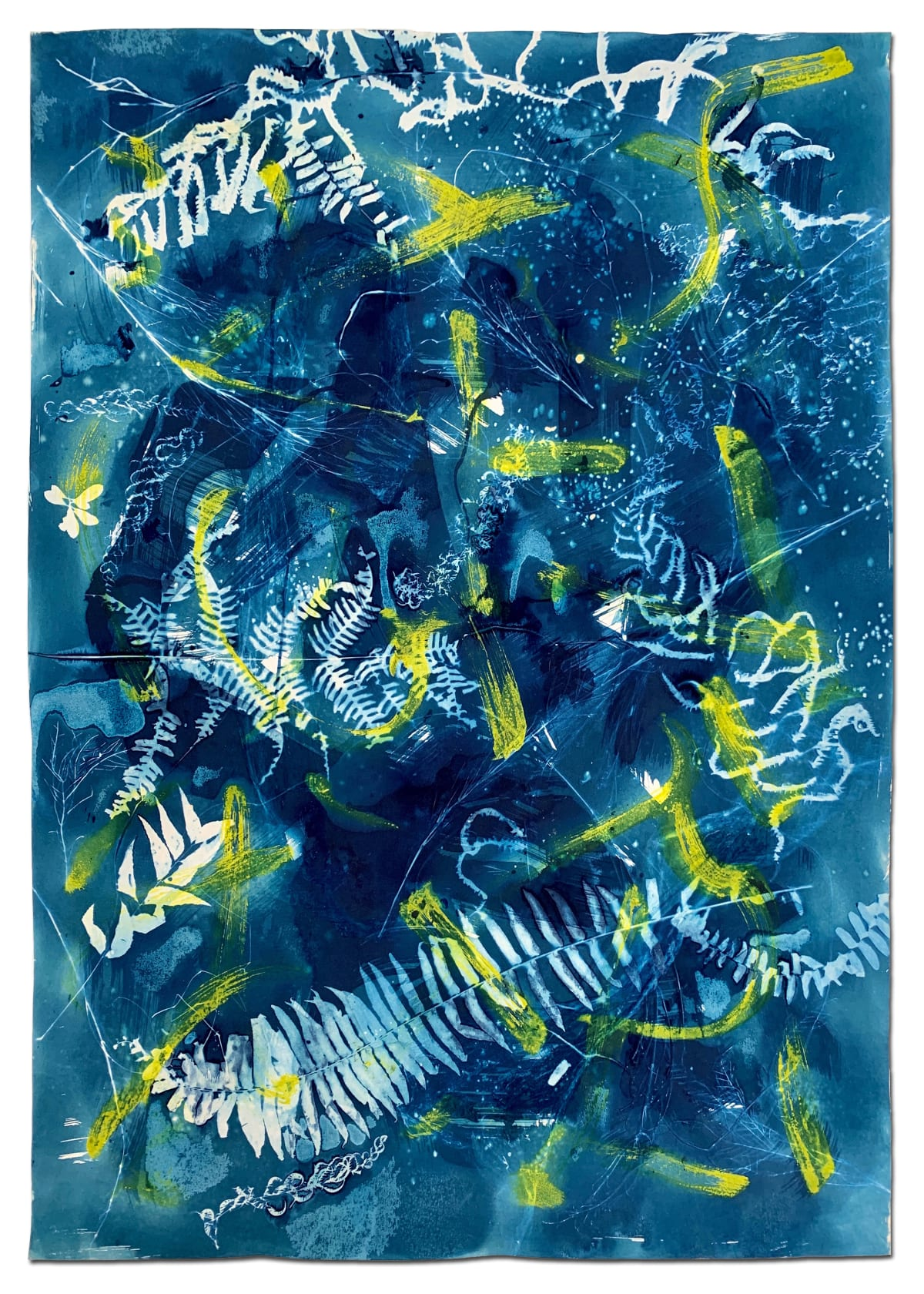
Elenita Cruz Dumlao
In 2013, she was the sole Asian artist to participate in the 10th International Women's Exhibit in Majdanpek, Serbia, where she secured first place in the New Media Arts category.
My Left Breast by Elenita Dumlao
This art work reflects the artist's battle with breast cancer and her journey of survival. The piece symbolizes resilience, hope, and the strength to overcome adversity. Dumlao underwent a mastectomy, and this experience became the inspiration for her work.
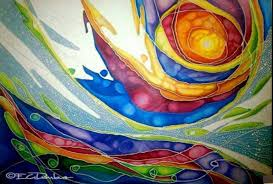
Moreen Austria
She works primarily with sculptures and extends her approach to painting and installations. She won the Grand Award for Metrobank Art and Design Excellence (MADE) for Sculpture Recognition. Received the Grand Prize at the Metrobank Art and Design Excellence competition in 2017 for her sculptural work, “Pagtaguyod.”
Lawig by Moreen Austria and Peter James Fantinalgo
The exhibition features sculptures and installations that explore the intertwined histories, shared language, and unique cultures of these the Visayan region
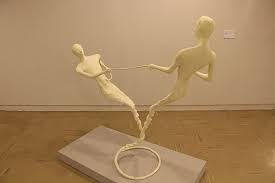
Clifford Espinosa
is a Filipino artist, architect, and environmentalist known for his unique approach to art and design. He is the founder of Espinosa Arts and Design, where he creates functional art pieces that often blend traditional Filipino craftsmanship with modern themes.
LuzViMin (2016) by Clifford Espinosa
It is an art piece that consists of three executive tables that can be used separately or combined to form a long, impressive table. This piece showcases Espinosa’s artistic philosophy and commitment to national unity. The individual tables represent Luzon, Visayas, and Mindanao, symbolizing the three main island groups of the Philippines. When joined together, they create a powerful statement about national unity.
Bulalakaw by Clifford Espinosa
is a functional art installation that merges cosmic inspiration with Filipino cultural symbolism. The name derives from the Filipino word for "meteor," combining bola (meteor rock) and lakaw (trail of light). The piece transforms a mundane table into a dynamic representation of celestial movement, featuring two core elements:
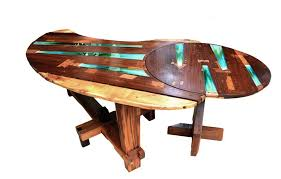
Martino Abellana
ffectionately known as "Noy Tinong," was a renowned Cebuano painter and influential figure in the Philippine art scene. Dubbed "The Dean of Cebuano Painters" and "The Amorsolo of the South," Abellana left an indelible mark on the artistic landscape of Cebu and beyond
Bangka (1979) by Martino Abellana
howcases traditional fishing boats (bangka) against a radiant coastal scene, demonstrating Abellana's signature fusion of Amorsolo-inspired realism with impressionistic flourishes. As one of Cebu's most celebrated artists, Abellana imbued this work with deep cultural significance, paying homage to the island's rich fishing traditions and coastal way of life.
Job was Also Man (1953) by Martino Abellana
earned first prize and Best Conservative Painting at the 1953 Art Association of the Philippines competition. The painting depicts an elderly beggar amid postwar ruins, symbolizing Filipino resilience after WWII through the figure’s outstretched palm and strained musculature, which emphasize human dignity in suffering. Reimagining the biblical Job—a symbol of endurance—as a war-torn Filipino, Abellana employs a dark, smoke-filled sky and burning cityscape to reflect national trauma.
